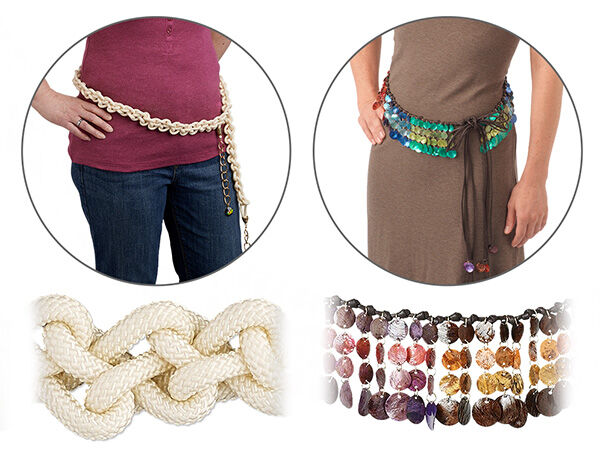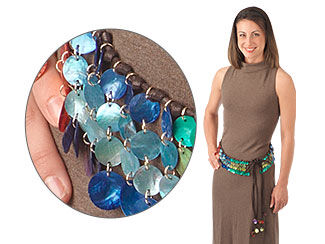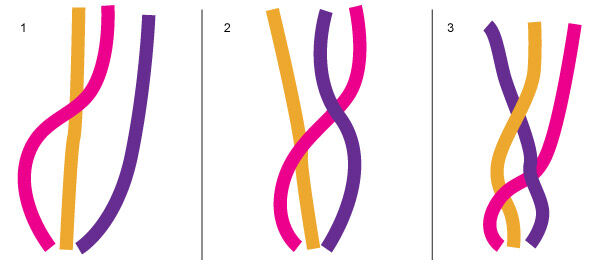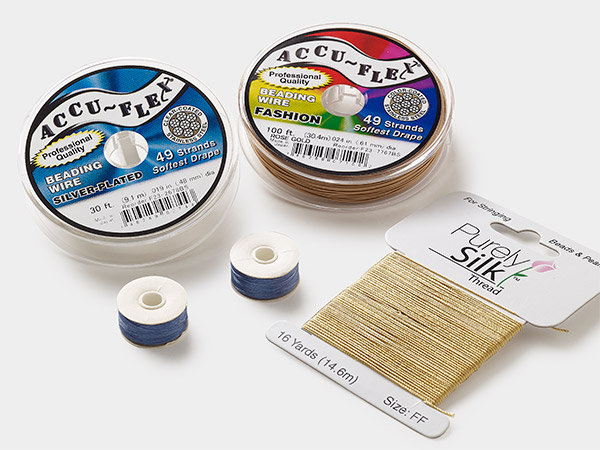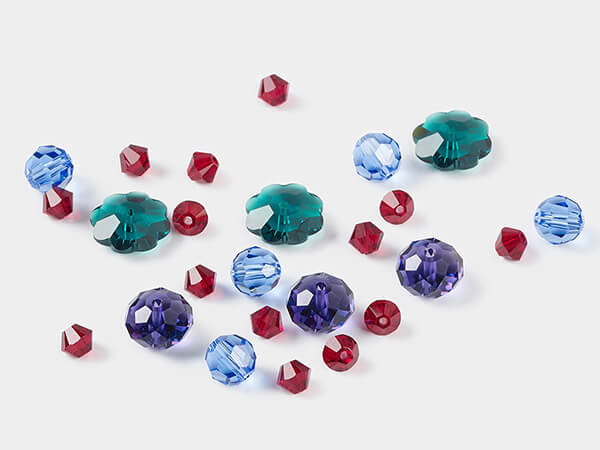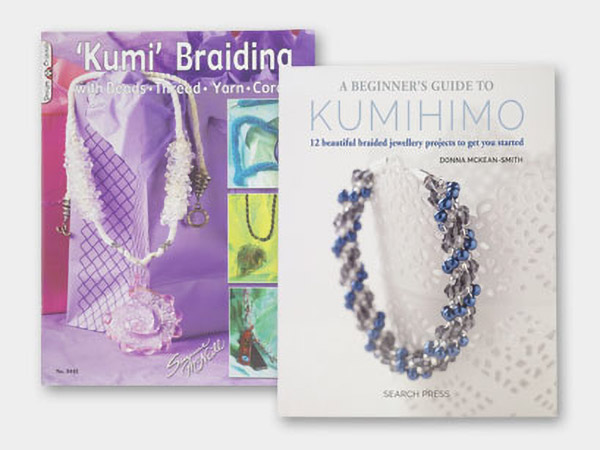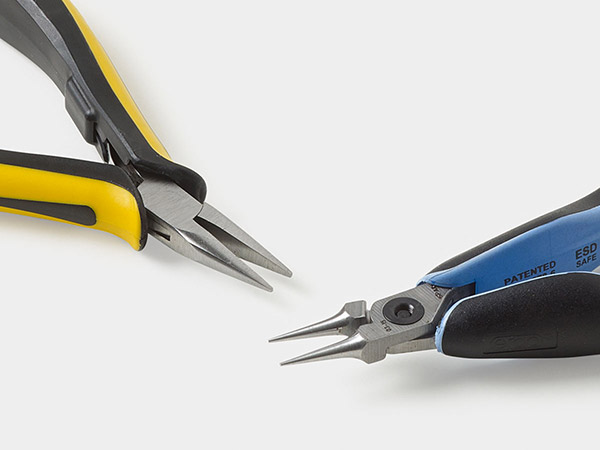Making Braided Belts
What's not to like about braided belts? They can look cool and rugged, or they can be dressed up. Either way, they provide lots of visual interest and texture. Braiding transforms multiple strands of flexible materials into a beautifully overlapping, elongated pattern through skillful interlacing.
Braided belts can be made from a variety of durable, yet flexible materials--including leather, nylon, fabric, canvas, cotton, faux leather and more. They compliment a wide range of clothing styles and accessories. They pair well with denim, linen and earth-toned or floral gowns and dresses made from natural fibers. Additionally, they go great with leather purses.
We'll point you in the right direction for materials and techniques you can use to start creating simple, fashionable braided belts.
Materials
Essentially, any material you can lay out in long strips is ripe for braiding. Some materials will be easier to braid than others, but these just take a little patience and practice.
Cord
Cord comes in a variety of materials including satin, leather, cotton, plastic, nylon, hemp, suede and silk. You also have a complete rainbow of colors to choose from: basic colors, pastels, neutrals—even metallics. Cord is most commonly available on spools anywhere from 5 to 100 yards. Because it is generally smooth and thin so it doesn't have to be aligned like strips, most beginners find it easy to braid with cord. Two long sections (or halves) can be braided with one end of each attached to a focal (or other component) leaving the other ends to be tied together when worn. The ends can be finished just like a necklace with terminators, crimps, knots, wirework and more.
Because it is generally smooth and thin so it doesn't have to be aligned like strips, most beginners find it easy to braid with cord. Two long sections (or halves) can be braided with one end of each attached to a focal (or other component) leaving the other ends to be tied together when worn. The ends can be finished just like a necklace with terminators, crimps, knots, wirework and more.
Leather
By far, the most popular material for belts is leather, and this includes braided belts. Made from tanned animal rawhide and skin using a variety of processes, leather is durable and flexible, making it ideal for belts. There are also faux leather options, for those who prefer.
Leather Sheets
The leather sheets we sell typically come in 9-1/4 by 3-1/2 inch rectangles. These can be cut into several strips and braided into 9-inch sections. These sections can then be connected in any number of ways with jewelry components such as focals.
Fabric Ribbon
Fabric ribbon is available in silk, organza, velvet, nylon and more. Most craft and fabric stores carry ribbon on prepackaged spools or sell them by the yard. Most of these types of fabric ribbon are soft and supple, but will gain strength when strands are braided together. Because of its softness, belts made from ribbon are best for decorative purposes, leaving rugged outdoor use for sturdier materials such as leather.
As you will be cutting the ribbon into strips--unless you're making a belt for a small waist-- you'll probably want to buy ribbon in spools or at least 2-yard lengths.
Belt Styles
Wraparound Braided Belt
Belts have been around as long humans have been wearing clothing, with braiding going back about 30,000 years. The wraparound style of belt will give you the most design flexibility and be the easiest to start with. It is worn around the midriff to gather in dresses, robes, long vests, tunics and other loose clothing--which makes this type of belt ideal for historical clothing styles such as ancient Roman, medieval, Celtic, Native American and Bohemian.
Quite simply, the wraparound belt consists of three or more sections of braiding joined in the front by a focal. The loose ends are tied together in the back, front, or most typically, side by the wearer.
Braiding Pattern
Attach the three strips of material to a sketch board, the legs of a table or anything secure enough to resist pulling. Start by crossing the left over the center strip, and then the right strip over what is now the new center strip. Repeat that pattern of left-over-center, right- over-center until you've braided the entire strip.
For illustrations that show the step-by-step braiding instructions see ''The Braided Look: 3- Strand Bracelet''.
The simple beaded belt in the image on the right demonstrates the wraparound style.
Other braiding techniques
Kumihimo Flat-Braided Belt
Kumihimo braiding using a plate or disc allows for many strands to be braided, which means more varied and intricate braids. Kumihimo braiding can be achieved with several different types of thread. For a fine braid, consider using hemp or silk and silk-like threads. For a thicker braid, consider using satin cord such as Satinique™ or imitation silk cording; for a very thick braid, ribbons and silk cord are wonderful to weave together.
Learn more about ''Using the Kumihimo Plate to Create Flat Braids'' in the FREE Jewelry-Making Instructions section of our website.
Spiral Kumihimo Braided Belt
A spiral braid adds even more visual interest to your belt. Learn ''How to Make a Spiral Kumihimo Braid'' here.
Embellishment
Once the basic braided belt has been completed, look for embellishment opportunities. And here, your options are almost limitless. You can add beads, rivets, tassels, pom-poms--as long as you don't have to worry about belt loops, just about any jewelry-making component is fair game. Have fun making belts that not only hold clothes together but gather curious onlookers together.
Shop for Your Materials Here:
Have a question regarding this project? Email Customer Service.
Copyright Permissions
All works of authorship (articles, videos, tutorials and other creative works) are from the Fire Mountain Gems and Beads® Collection, and permission to copy is granted for non-commercial educational purposes only. All other reproduction requires written permission. For more information, please email copyrightpermission@firemtn.com.
